
The end of the revolution found Athens in ruins after the long war. The image of the city was disappointing. There was no paved road, the roads were rough and dirty, and everywhere there were ruins. Its proclamation as the capital of the state in 1834 certainly required its reconstruction and the transfer to it of Administrative Services.
The first urban plans were prepared by the architects Stamatis Cleanthis and Eduard Schaubert to be revised in 1834 by the Bavarian architect Leo von Klenze.
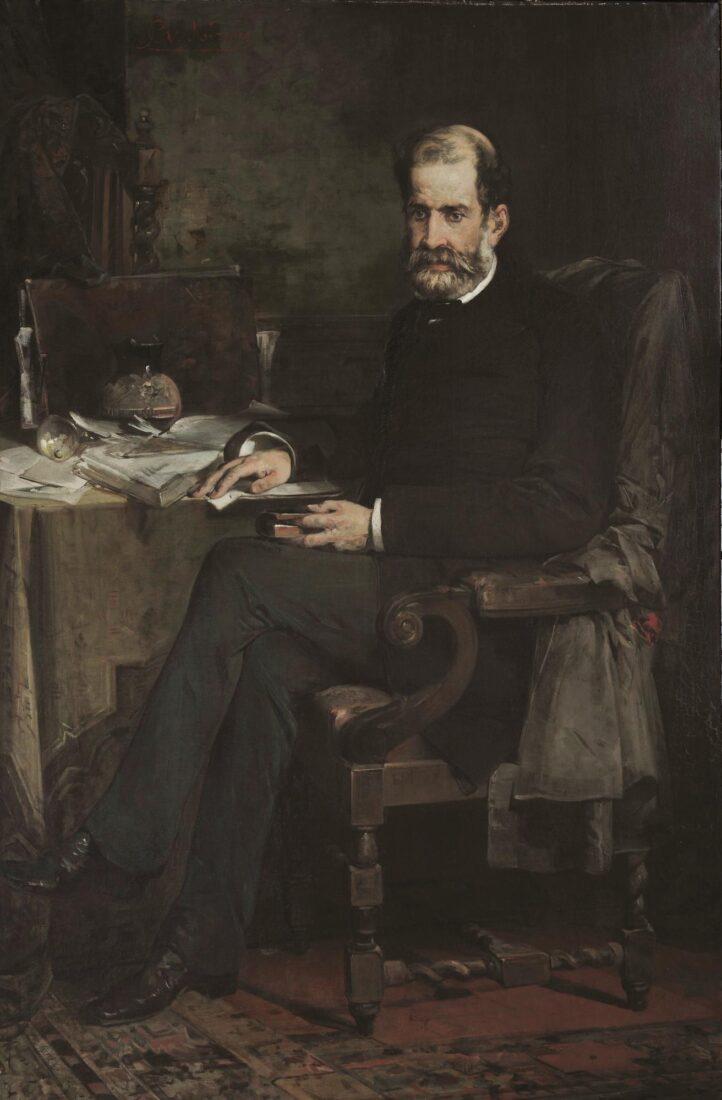
Nikiforos Lytras, Lysandros Kavtantzoglou, National Gallery (www.nationalgallery.gr)
The first roads carved in the capital were the streets of Aiolou, Ermou and Athena, only in 1834. The Church of Saint Irene was already included in the first urban plans of the city. Indeed the temple would have a prominent role in the new capital.
The Church of Agia Irini was one of the buildings that had suffered serious damage during the years of the Revolution. Most of the small post-Byzantine church that was a dependency of the Penteli monastery had been burned down. Immediately after the transfer of the capital from 1834 to 1835, the church was repaired and used as a Metropolitan Church.
However, the population of Athens grew after the proclamation of the city as capital and along with the needs of the ecclesiastics of the inhabitants. In 1834 the population of Athens was 12 000 while in 1850 it approached 40000. The temple was no longer able to respond and it was decided to rebuild it. The reconstruction of the temple required the costly and time-consuming process of expropriation of adjacent properties. The project was entrusted to the architect Lysandros Kaftanzoglou who already in 1843 was director of the School of Arts, later Polytechnic. For the reconstruction of Agia Irini, he designed a three-aisled Basilica with a dome and two spires, of neoclassical style, with Renaissance and Byzantine influences. The works lasted three years from 1847 to 1850 and material from demolished churches in the capital was used. The interior decoration was completed, after the inauguration, between 1879-1892 by the hagiographer Spyridon Hatzigiannopoulos. Its impressive gilded iconostasis and hieratic vessels were offered by Tsar Nicholas of Russia in 1850.

Aiolou Street, Agia Irini Square (www.10deco.gr)
As a Metropolitan Church, St. Irene hosted many important moments of modern history. In the temple the mayors of Athens were sworn in, Otto was crowned king in 1835 after his coming of age and here the 25th of March was celebrated for the first time in 1838 as a national holiday.
The mid-1850s was a period of” modernization ” of Athens. Queen Amalia was entrusted with the supervision of a number of projects in the capital and a series of decrees were issued concerning the widening of roads, arrangements, construction of squares and infrastructure projects. Among the squares that were created was the square of Agia Irini which was formed in the two years 1855-1857 during the mayor of Konstantinos Galatis.
Aiolou Street along with Ermou defined in the othonian period the emerging new commercial center of the city with the shift to the area of commercial and social life of Athens. From the middle of the 19th century, new shops, responding to new consumption habits, opened on Ermou, Aiolou and the surrounding streets. These were” commercial ” stores that sold fabrics, clothes, shoes. In fact, in Aiolou Street, the shops selling men’s hats had gathered. The two-storey houses along its length had shops on the ground floor in which coffee shops, pharmacies, pastry shops, photo shops etc were constructed.
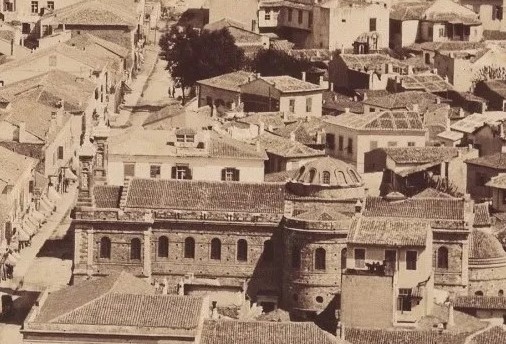
Agia Irini in 1855. Source: National Library of France (BNF) (www.elia.org.gr)
The gradual development of public transport in the second half of the 19th century contributed to the development of the area, which facilitated the movement of residents from the districts to the center. The first horse-drawn bus line started in 1835 starting from the junction of aiolou and Ermou streets. In the area of Agia Irini Square were parked the horse-drawn transport of the time.
The central position of the square for the life of the city is also evident from the construction of emblematic buildings and the business in it.
In 1834 there was opposite the Church of Agia Irini the famous “Cafe of Europe”. It was founded by the French lady Robert, daughter of philhellene Francois Robert who had been killed during the second siege of The Citadel in 1827. The cafe of Europe was the first in the capital with a pool table and it was frequented by Greek and foreign visitors.
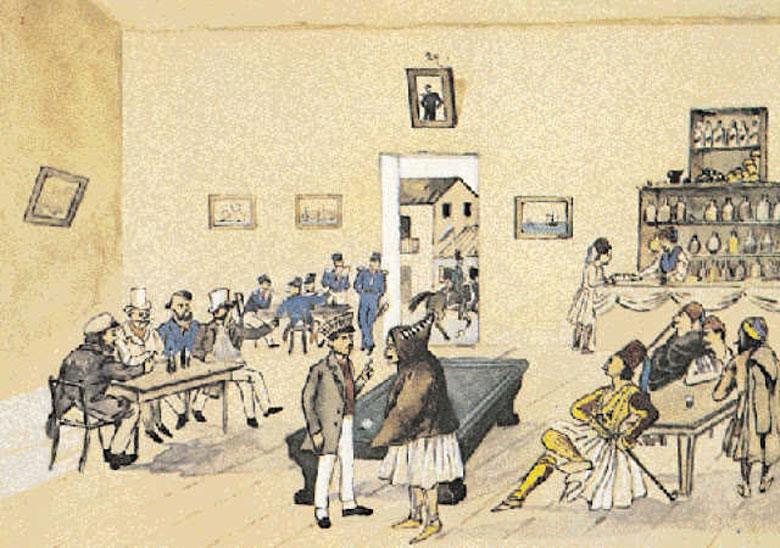
” To Kafeneio tis Europis” (The Coffee Shop of Europe)
In the middle of the 19th century, Parnassos hotel operated on the floors above the cafe, which also had a restaurant as there were still no shops that were exclusively restaurants. In 1884 the hotel – restaurant Petroupolis, which was one of the oldest restaurants in Athens, was moved to the building. It operated as a hotel-restaurant from 1834 and was located in Ermou near Kapnikarea
In 1839, a three-storey building was built in the square ( Aiolou 39). On the roof of Professor C. Vouros installed a meteorological station and Observatory already before the reconstruction of the Observatory of Athens. One could therefore consider that in this building operated, albeit informally, the first Observatory of Athena. In 1878 it operated as a hotel under the name “Byron” while on the ground floor it housed commercial shops. The building is now considered one of the oldest in Athens and has been classified as a listed building by the Ministry of Culture.
ύ.

Advertisment of a store in Agia Itini Square, newspaper SKRIP, 1898
The Square had become the center of the flower trade. At the beginning of the century, itinerant florists who carried flowers with their donkeys to Athens from the periphery made their appearance on the streets of the city. They gathered in Agia Irini Square and from there distributed the flowers to the florists of Stadiou Street and in the following years to the “flower shops” of Vasilissis Sofias. This created the tradition of florists in the Square which survived for several decades.
The development of stadium Street in the late 19th and early 20th centuries shifted the center of Commerce. Gradually the style of trade of Aeolus changed. They remained lower class shops while street vendors with their carts gathered there. At the beginning of the 20th century, furniture manufacturing was located on aiolou street while in the square of Agia Irini were concentrated the crafts of chairs / chairs.
Traces of the 19th-Century Square are still discernible. Agia Irini Square, a reference point of Athens since the first years of its modern history, followed the course of the center of the capital. The removal of housing, the years of abandonment, the change in its style. In recent years, however, the square once again claims a role in the everyday life of Athenians and visitors to the city as a popular meeting point and entertainment.
Saint Irene herself, however, had never come to Athens. She was born in the 4th century in Persia under the name Penelope which she changed to Irene after her conversion to Christianity. She was martyred because of her faith and lived most of her life in Ephesus.
Sources
Γιοχάλας Θανάσης, Καφετζάκη Τόνια, Αθήνα. Ιχνηλατώντας την πόλη με οδηγό την ιστορία και τη λογοτεχνία, εκδ. ΕΣΤΙΑ, Αθήνα, 2013
www.elia.org.gr ,Ξενοδοχείο Παρκ
www.elia.org.gr, Ξενοδοχείο Βύρων
www.toperidiko.net. Ιστορικά καφενεία της Αθήνας του 19ου αιώνα
www.athenssocialatlas.gr, Σχεδιάζοντας την Αθήνα τον 19ο αιώνα
www.taathinaika.gr, Ο Ναός της Αγίας Ειρήνης της Αθηναϊκής οδού Αιόλου
www.taathinaika.gr , Τα ανθοφόρα γαϊδουράκια στην προπολεμική Αθήνα
ΕΒΕ, Ψηφιακή Βιβλιοθήκη Εφημερίδων και Περιοδικού Τύπου
www.athensvoice.gr , Η Αιόλου έχει τη δική της ιστορία
www.10deco.gr , Η παλιά Αθήνα μέσα από καρτ ποστάλ
www.mixanitouxronou.gr , Έτσι ήταν η Αιόλου με τον ναό της Αγίας Ειρήνης στα χρόνια του Όθωνα. Γιατί ο νεαρός βασιλιάς δεν φόρεσε στέμμα και κάποιοι το θεώρησαν γρουσουζιά…

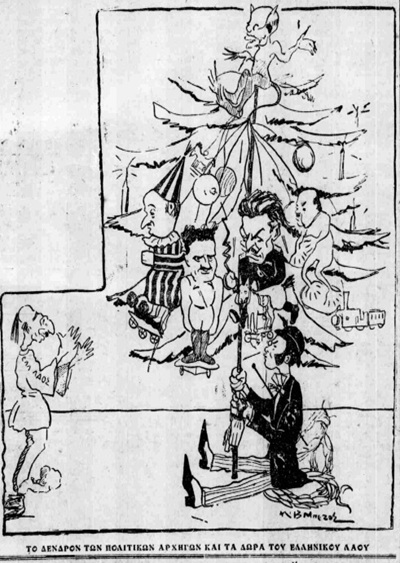

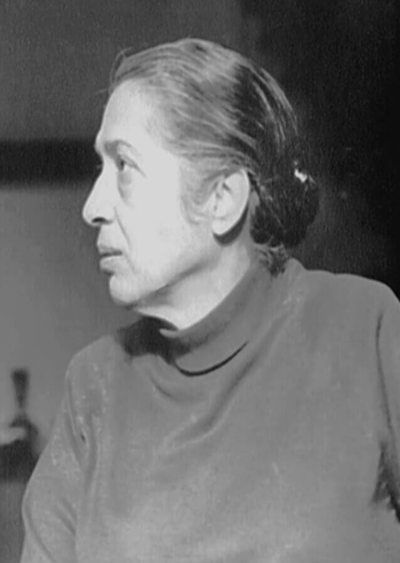
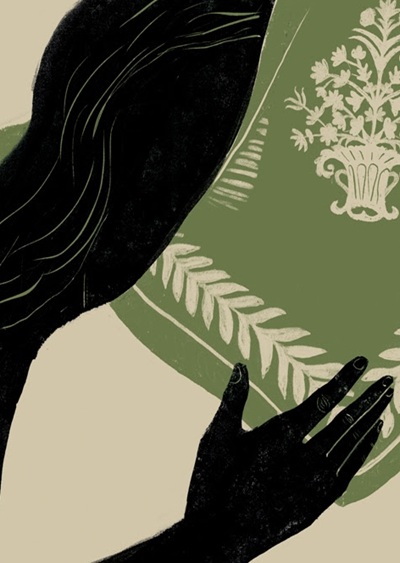


Leave A Comment